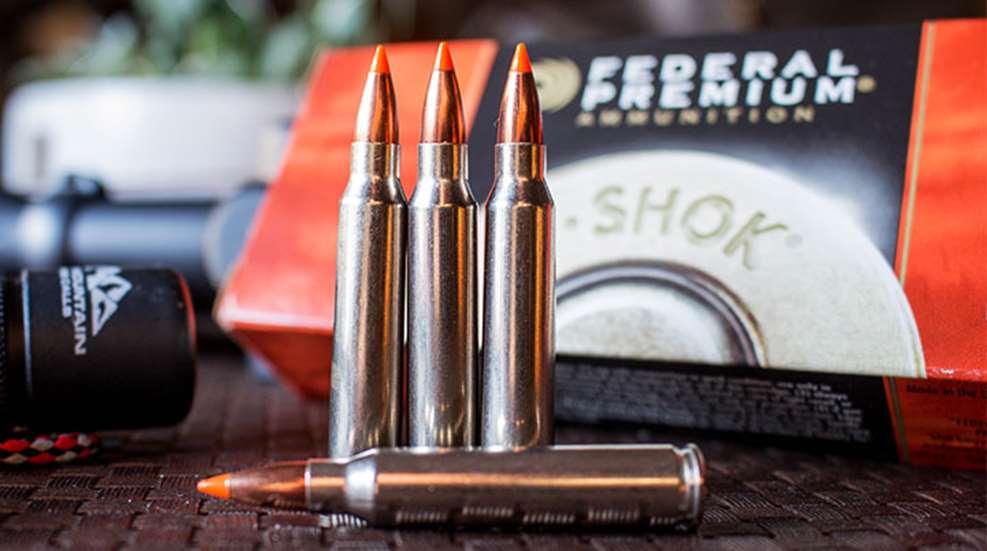
We were sitting on a huge prairie dog town near Elk Mountain, Wyo., shooting furiously all morning, but the action started to slow down after lunch. American Rifleman’s Christopher Olsen and I were having some fun working out a graduated reticle in the scope we were using, and had a pretty good handle on the dope. Christopher was on the rifle when I ranged a standing dog at 802 yards. He got steady, we agreed on the wind call, and broke the trigger; after a half second or so the dog flipped backward. “Get on the gun, now!”
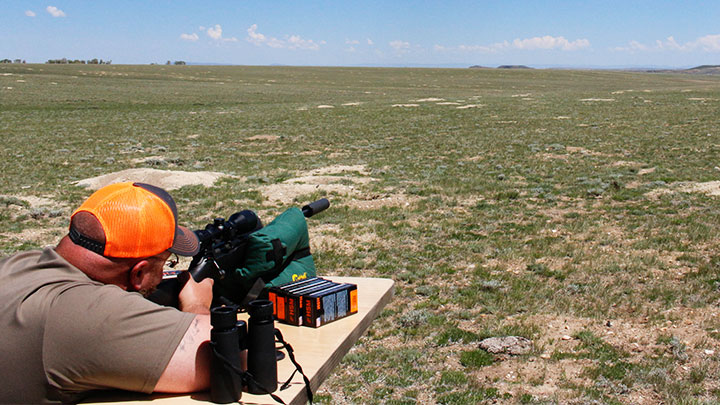
We swapped positions, and with the very next shot I repeated the scenario, sending another dog to the great alfalfa patch in the sky, in the same spot as the first. I’ll be the first to tell you that I wouldn’t want to try and repeat that stunt, but it happened, with multiple witnesses. The cartridge? The .223 Remington.
There is no denying the influence of a military cartridge; ammunition and rifles are usually readily available, and many hunters respect the wisdom of the military ballisticians. Like the .45-70 Government, .30-06 Springfield and 7.62x51mm NATO before it, the U.S. Military adopted the 5.56mm ball cartridge M193 in 1963, a product of the combined efforts of Armalite’s Eugene Stoner and Robert Hutton, the technical editor of Guns & Ammo magazine.
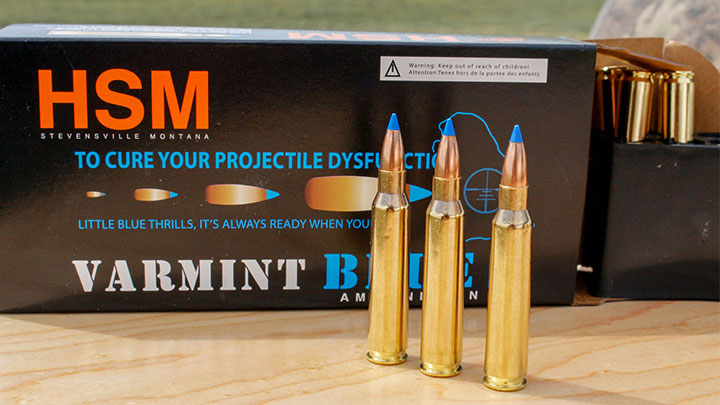
Engineered to meet a very specific set of criteria laid out by the U.S. Army, the cartridge is based on the .222 Remington—released in 1950—elongated to hold more powder in order to generate the necessary velocity required by the Army. Shortly after the adoption of the cartridge, Remington released a sporting version of the cartridge, releasing the .223 Remington in late 1963; the original load—as adopted by the military—saw a 55-grain bullet of .224-inch diameter propelled at a muzzle velocity of 3250 fps.
The case is a rimless design, using the 0.378-inch diameter case head of the .222 Remington, with the case elongated from 1.700 inches to 1.760 inches. The .223 Remington has a 23-degree shoulder, used for headspacing, and the neck length of just over 0.20 inches offers a suitable amount of neck tension to keep its bullets in place. The rimless design is rather universal, and the .223 Remington has been chambered in just about every conceivable rifle action out there (my buddy and excellent gunsmith Ralf Martini once made a scaled down double rifle chambered for the .223 Remington). The .223 Remington uses an overall cartridge length of 2.26 inches.
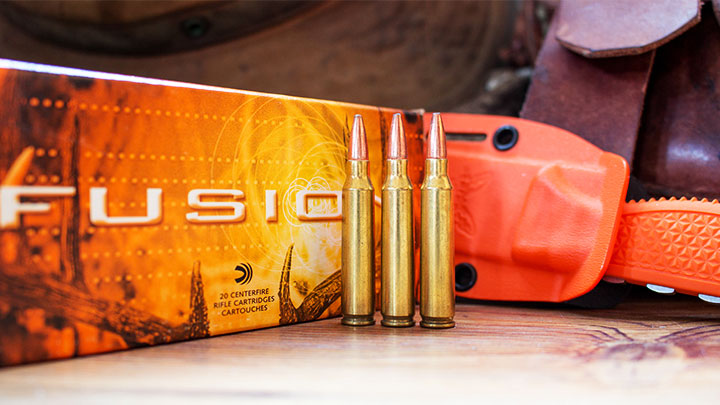
With the original twist rate of 1:14”—some companies used 1:12”—the .223 Remington’s bullet weights topped out at 55 to 60 grains, and went as low as 30 grains, but the 50- and 55-grain were the most popular. By the 1990s, rifles were available in .223 Remington with a 1:9” twist rate, and after the turn of the century, the 1:7” twist was available; this allowed bullets of up to 77 grains to be properly stabilized, though it does tend to ruin the accuracy of the light-for-caliber bullets.
Big Green released the .22-250 Remington in 1965, and the comparisons have been raging since that date. The younger cartridge offers a higher velocity, yet the elder gives the benefits of all that surplus military ammunition (at least it did when we had ammunition!) and component brass. Despite the lower velocity, the .223 Remington remains the favorite, and our most popular varmint cartridge. It is well suited to woodchucks and prairie dogs—as Mr. Olsen and I proved in Wyoming—as well as to the furbearers like foxes, bobcats and coyotes. There are a large number of hollowpoint bullets available to the varminter, as well as the thin-jacketed polymer-tipped bullets like the Nosler Ballistic Tip Varmint, Hornady V-Max and Speer TNT.
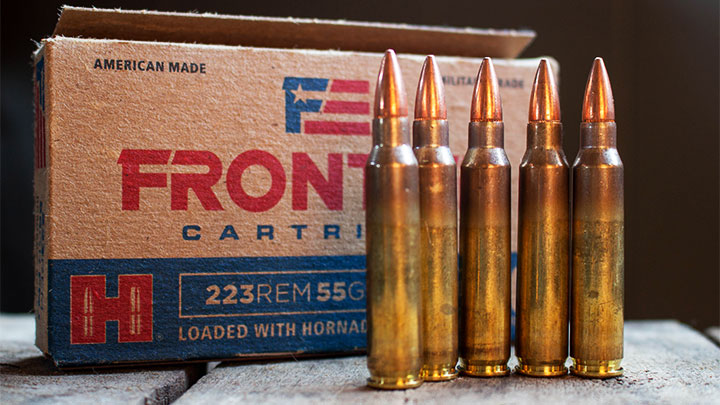
With a proper bullet, the .223 Remington can be a deer cartridge, though in my experiences there are better tools for that job; I've seen deer taken cleanly with the .223, and I've seen a number of deer lost, in spite of what appeared to be a properly placed shot. If you insist on using the .223 for deer, hogs and the like, look to loads like Federal’s 62-grain Fusion and 60-grain Nosler Partition load, as well as their 62-grain Trophy Bonded Tip. The Barnes TSX, Hornady GMX and Federal Trophy Copper all make a stout choice for larger game, in addition to offering a lead free option. These bullets in the 60- to 62-grain range will still carry a muzzle velocity of 3000 fps.
The .223 Remington is dimensionally identical to the 5.56x45mm NATO cartridge, though the chambers have slight variations, and the throats are not the same. As a result, it is safe to fire .223 Remington ammunition in a 5.56x45 chamber, but the reverse is not always true. It is best to stick to .223 Remington-headstamped ammunition, especially in the autoloading rifles.
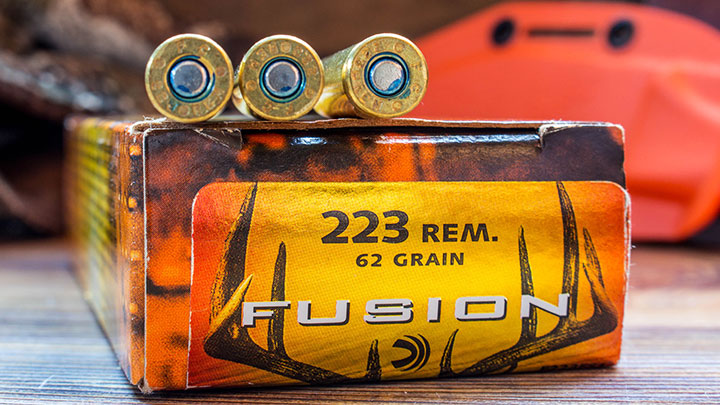
The .223 Remington sits right in the middle of the list of excellent varmint cartridges, being much faster than the .22 Hornet and .222 Remington, yet not as speedy as the .22-250 Remington or the .220 Swift, and that’s not a bad place to be. It is easy on barrels, it is easy on the shoulder, and it makes a wonderful cartridge to teach a new shooter about marksmanship with a centerfire rifle. The cartridge is capable of hair-splitting accuracy in a properly built rifle, and easily does double-duty as a target rifle. It has enough velocity for a respectable trajectory, and with the heavier bullets with a higher ballistic coefficient, it can resist wind deflection rather well. Though some folks will hype the capabilities of the little cartridge, if you use it for what it was intended, the .223 Remington will give a lifetime of good service.
Looking for previous installments of our "Behind the Bullet" series? We've got you covered.
• 6.5x55 Swedish
• .416 Remington Magnum
• .300 Winchester Short Magnum
• 28 Nosler
• 6.5 PRC
• .22 WMR
• .458 Winchester Magnum
• .22 Hornet
• .280 Ackley Improved
• .240 Weatherby Magnum
• .458 Lott
• .264 Winchester Magnum
• .348 Winchester
• .33 Nosler
• .260 Remington
• .30-30 Winchester
• .416 Rigby
• .358 Norma Magnum
• .22 LR
• 7mm-08 Remington
• 8mm Remington Magnum
• .338 Federal
• .224 Valkyrie
• .338-06 A-Square
• 9.3x62mm Mauser
• .257 Weatherby Magnum
• .45-70 Government
• .300 H&H Magnum
• .25-06 Remington
• .30-06 Springfield
• 6.5 Creedmoor
• .300 Remington Ultra Magnum
• 7mm Remington Magnum
• .470 Nitro Express
• .280 Remington
• .300 Winchester Magnum
• .270 Winchester
• .222 Remington
• .45 ACP
• .404 Jeffery
• .44 Remington Magnum
• .41 Remington Magnum
• .243 Winchester
• .338 Winchester Magnum
• .357 S&W Magnum
• 6.5-284 Norma
• 8x57 Mauser
• .38 Smith & Wesson Special
• 7x57mm Mauser
• 9mm Luger
• .35 Whelen
• .454 Casull
• .375 H&H Magnum
• .45 Colt
• .22-250 Remington
• 10mm Auto
• .308 Winchester



































